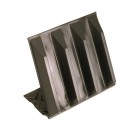- Joined
- 26 Oct 2024
- Messages
- 2
- Reaction score
- 0
- Country

Hi all,
First time posting so bare with. We've just got a new place and the survey suggested that we add some insulation to the floor of the roof. It's an old house c.250 years old and amazingly the roof is sound, maybe a few tiles need replacing but as I'm aware no leaks.
The loft space has insulation between the floor joists but is very patchy, dusty and looks bad. There's gaps where downligths where installed later. So I'm thinking of the following and just checking a few things / worries I had.
- remove old insulation
- put loft lids on the down lights to prevent any gaps (there are many)
- place 100mm insulation between joists
- install some loft legs on one side for a few boxes to go on
- lay 170mm going the other way to the joists
Is this correct? Should I be worried that an unfelted roof may allow water to get in and then cause mold on insulation?
Should I be putting insulation all the way up to where the pitched roof starts?
Am I right to say I shouldn't put any kind of waterproofing stapled to the pitched roof battons?
Many thanks!
First time posting so bare with. We've just got a new place and the survey suggested that we add some insulation to the floor of the roof. It's an old house c.250 years old and amazingly the roof is sound, maybe a few tiles need replacing but as I'm aware no leaks.
The loft space has insulation between the floor joists but is very patchy, dusty and looks bad. There's gaps where downligths where installed later. So I'm thinking of the following and just checking a few things / worries I had.
- remove old insulation
- put loft lids on the down lights to prevent any gaps (there are many)
- place 100mm insulation between joists
- install some loft legs on one side for a few boxes to go on
- lay 170mm going the other way to the joists
Is this correct? Should I be worried that an unfelted roof may allow water to get in and then cause mold on insulation?
Should I be putting insulation all the way up to where the pitched roof starts?
Am I right to say I shouldn't put any kind of waterproofing stapled to the pitched roof battons?
Many thanks!


